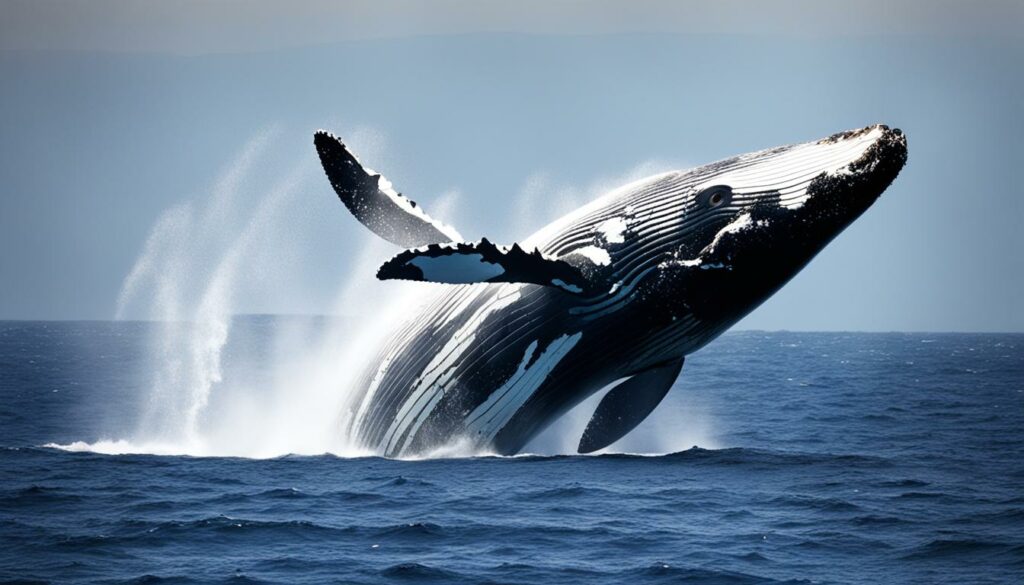Adverts
Singing whales are fascinating creatures that inhabit the vast oceans, singing mysterious melodies that echo across the seabed. These enchanting songs reveal valuable secrets about the marine biodiversity and have piqued the curiosity of scientists for decades. In this section, we will explore the mystery behind the whale music, its importance for ocean conservation and how scientific research is helping us to unravel it.
A whale music is a unique form of communication that challenges our knowledge of the capabilities of other living beings. They produce a variety of sounds, from hissing and squeaking to complex and hypnotic melodies. These underwater harmonies are not only an artistic expression, but also carry important information about the whale behavior and their social interactions.
Adverts
Ocean conservation is essential to ensure the survival of singing whales and marine biodiversity as a whole. Human activities, such as noise pollution, overfishing and climate change, have a significant impact on marine ecosystems and threaten the existence of these majestic creatures.
It is through the scientific research We are delving deeper into the mystery of singing whales. Scientists are using advanced techniques to study whale migration patterns, identify different species through their sounds, and monitor the environmental impacts of human activities. These studies are essential to understanding these animals and contributing to effective conservation strategies.
Adverts
In the next segment, we will explore the whale music in detail, diving into the charms of underwater melodies and discovering what it reveals about the behavior of these giants of the sea.
The Music of Whales: Enchanting Underwater Harmonies.
In this section, we will dive deep into the whale song, an incredible form of communication that transcends borders and oceans. We will explore the meaning behind the melodious tunes and how they reflect the behavior and social interactions of whales. In addition, we will discuss the importance of ocean conservation to protect these majestic creatures and preserve the marine biodiversity.
Whales are known for their unique ability to produce complex and beautiful sounds known as whale song. These stunning underwater harmonies are emitted through the whales' vocal cords and can be heard from great distances. Scientists believe that the whale song plays a vital role in their behavior and communication.
Whale song is a form of cultural expression that varies among different whale populations around the world. Each group of whales has its own unique melody, which can be passed down from generation to generation. This musical ability demonstrates the complexity and intelligence of these marine mammals.
Whale songs are not only beautiful, but they also play a crucial role in whale social organization. Through these underwater harmonies, whales can communicate, attract mates, and establish territories.
In addition to conveying important information, whale song also plays a fundamental role in ocean conservation. By studying whale songs, scientists can gain valuable insights into whale behavior and the health of marine ecosystems. Understanding whale songs is essential to taking appropriate conservation measures to protect these magnificent creatures and the environment in which they live.

Scientific Research Revealing the Secrets of the Ocean.
In this section, we will examine how the scientific research has played a pivotal role in revealing the ocean's secrets and understanding the whale behavior singers.
Singing whales have fascinated scientists and enthusiasts for decades, but only recently have we been able to delve deeper into their mysteries, thanks to advances in scientific research and marine technology.
One of the study techniques used is the analysis of migration patterns. By tracking the movements of whales, scientists are able to better understand their migratory routes and how they move through the ocean.
Identifying different whale species through their sounds is another essential area of research. Each species has a distinct vocalization, allowing scientists to identify them and study their behavior more accurately.
These research techniques have given us unprecedented insight into the whale behavior singers and their importance for the balance of the marine ecosystem.
However, not all the findings are encouraging. Scientific research has also revealed the environmental impact of human activities on the oceans.
Noise pollution caused by ships, explosions and underwater drilling interferes with whale communication and can lead to disorientation and separation of social groups.
Additionally, the accumulation of plastic waste and chemical contamination directly threatens marine life, including singing whales.

It is essential that scientific research continues to advance so that we can better understand the behavior of singing whales and their conservation needs.
Protecting these majestic creatures and preserving marine biodiversity are urgent and essential challenges to ensuring a sustainable future for our oceans.
Conclusion.
In this final section, we conclude our journey into the mystery of singing whales. We recap the importance of understanding their song and the environmental impact that threatens their existence. We emphasize the need to conserve the oceans and protect marine biodiversity to ensure a sustainable future for whales and the entire marine ecosystem. The Mystery of the Singing Whales remains, but with research and awareness, we are closer to unraveling it.




